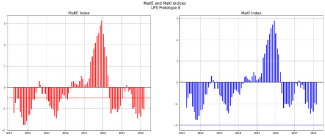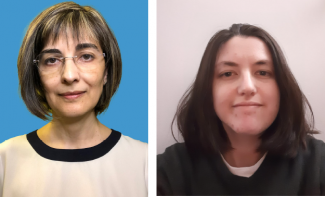Cristiana Stan of George Mason University originally proposed a very exciting and new type of DTC visitor project that involved holding a “hack-a-thon” where teams of two graduate students would be tasked with selecting and developing a METplus Use Case for one of the subseasonal to seasonal (S2S) metrics identified during the 2021 DTC UFS Evaluation Metrics Workshop. The winning team would then be given the opportunity to visit the DTC for up to three months to collaborate with the METplus team on continuing to integrate additional S2S diagnostics into METplus. Unfortunately, there was insufficient interest from students to make the hack-a-thon work. With an eye towards maintaining the original goal of increasing student engagement and experience with METplus, the DTC worked with professor Stan to modify the scope of her project. At the time, Cristiana was already working to create a METplus Use Case for a metric developed by her research group to monitor the El Niño Southern Oscillation that would be implemented at NOAA’s Climate Prediction Center as part of a Test Bed project. The scope of the DTC visitor project was to expand the existing use case and make it applicable to forecast data.
As a result, both Cristiana Stan and her graduate student, Loren Doyle, visited the DTC in 2023. Loren visited during the Spring and Summer and Cristiana during the Summer. They met with Danial Adriaansen, John Halley Gotway, Christiana Kalb, and John Opatz to discuss implementation of METplus with two metrics designed to evaluate the relationship between the Madden Julian Oscillation and the El Niño Southern Oscillation. A previous use case creating these metrics using METplus had already been added to the METplus repository, but input data needed to shift to UFS data, which created new obstacles. Additionally, Cristiana and Loren were able to review the ongoing work to improve METplus’ usability through a focus group and provide their own experience with METplus and opportunities for improvement with the unique perspective of research development.
While the visit included some hybrid meetings, the in-person meetings benefited from the diagrams drawn with the dry erase markers on the ‘traditional’ white boards. For example, the subseasonal to seasonal (S2S) forecast systems use different strategies for initializing the forecasts. The initial conditions vary from a particular date to a particular day of the week and/or from a few times a week to every day of the week. METplus diagnostics must be flexible to accommodate datasets with different structures as well as sizes and being able to visualize these structures was helpful for adapting existing capabilities in METplus and informing developers of the future developments.


